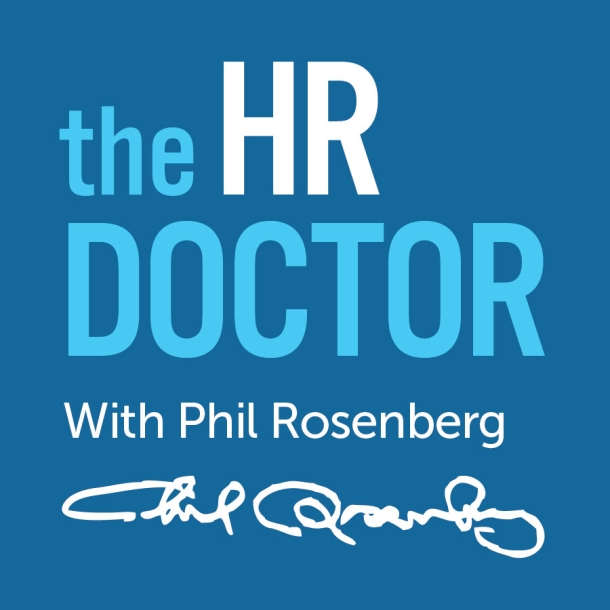The HR Doctor is in - May 30, 2016
Getting to Great in Human Resources (HR)
Ours is a very complicated and sometimes hard to understand society. We have both inherited it and further compounded matters by our own behaviors. In such a situation, we need great local government more than ever before. This is especially true when nature and our fellow humans regularly create serious trouble for us. Local government must be at its best when things are at their worst.
However, there cannot be great county, city or school district governance without great HR. Without great human resources management the liabilities of a local government will grow continuously. The best employees will leave, and the poorest behavior and weakest performance will dominate the reputation of the agency.
So, what does a local government need to make HR great? Here are the major requirements. Note that these requirements do not cost gigantic amounts of money. They are not complicated. They do require commitment, a sense of personal and professional responsibility, and accountability — no small challenge in organizations that crave excuse-making and shifting or avoiding direct responsibility in many cases. A sense of humor helps too!
1 R-E-S-P-E-C-T is the foundation of great HR. Identifying who is affected by HR activities (i.e., who are the stakeholders?) is the start of improvements in this key area. Stakeholders in a government HR function include citizens who may apply for a job. This means designing the entire recruiting and selecting system based around respect for the customers’ time and expectations. An efficient system will use, but not overly depend on technology.
It will ask every employee involved in recruiting and selecting to remember clearly the days when they, too, were unemployed or applying for their first job. They need to remember their own hopes and dreams as they applied for a promotion and imagined how that new job might allow them to finally get health insurance for their family or their first home.
Reviewing and enhancing the processes of recruitment and selection is a great first step in enhancing HR organization-wide. This can be done quite simply — conduct a facilitated workshop on process improvement involving the staff of the HR function as well as key users.
Within one day (yes, really one day!), you can identify process improvement opportunities and prioritize those opportunities. Within a day thereafter, an HR business plan can be drafted with specific accountability laid out for the achievement of milestones in the process improvement. This “How many? By when?” business plan can be presented to the elected officials and the internal leaders of the organization for review and approval. Once that happens, HR process improvement is officially underway.
2 Every manager is not only an HR manager but also, unfortunately or not, a security manager. A thorough security review in the organization is very much a part of HR improvement. Once again, this is not a subject only for the HR department, but for every manager and every employee.
In a great many private and public organizations, the security function has migrated from the law enforcement department or public works to HR. Security is no longer a matter of locks and keys, gates and fences, guard stations and ID cards.
It includes human logistics; that is, understanding the interaction between human behavior and physical security activities. It involves behavioral assessments of applicants as well as developing rapid response “HR ER” capabilities within the organization. In the majority of cases, all of this can be managed and developed with internal resources. Nonetheless, much more is needed to strengthen security at work and in the community than the ready and responsive law enforcement group.
Once again, this area of process improvement can begin with something on the order of a brief, one-day facilitated review of how well the organization is prepared for the most likely security problems — whether the result of poor behavior, mechanical failure or natural disaster. Thereafter, it is a matter of assigning responsibilities and developing and applying our new friend, the “How many? By when?” program management philosophy.
3 Every current policy in the organization that touches on human resources needs to be reviewed and, as necessary, enhanced or supplemented with new policy as needed. A classic example is the job descriptions.
Keeping these documents up-to-date may seem like an annoying bureaucratic requirement. There may well be hundreds of these things. However, the reality is that a job description is a core document to hold people accountable, and for a county to be able to defend itself against legal challenges. Unfortunately, the sense that job description maintenance is a low priority, and frankly just annoying, limits the resources devoted to this form of maintenance. It is really a form of infrastructure maintenance.
Sooner or later the staff will wake up to realize that the last time the job descriptions were reviewed was prior to the Spanish-American War. Job requirements and “essential functions” are no longer valid or cannot be meaningfully used by defense attorneys to support the organization. On the other hand, plaintiff lawyers orbiting around the local government parking lots looking for business will smile broadly at the thought of an outdated HR system.
The same is true of reviewing the organization’s policies on acute liabilities such as nondiscrimination, behavioral propriety, anti-bullying and ensuring that disabled employees have the opportunity and the accountability shared by everyone else. Policy review is a spectacular subject for internal work and does not require the use of outside consultant resources, except perhaps for the initial determination of what work needs to be done, how to get it done and how to measure progress.
4 The final item to be mentioned is the importance of training and employee development. Helping all employees realize they are essential to the agency’s success does not happen by itself. Nor does it happen if employees are dragged kicking and screaming into a 19-hour seminar with 4,000 PowerPoint slides full only of words in tiny fonts. Short, compelling and meaningful training activities are required. Most can be developed in-house by members of the very competent staff, which I know exists in organizations throughout the country.
Sometimes presentation skills will require an outside facilitator or trainer but this need not be and should not be an ongoing huge line item in the budget. It is also possible to work well and cost-effectively with local resources such as universities and state colleges.
The training needs begin with top management. If top management is not convinced that compelling training is a requirement for anything else to be improved, there is an even more fundamental problem in the organization that sooner or later will require more of elected officials’ time and lawyer bills to pay.
The elected officials and the top administrators need to understand and “sign on” to the idea that you can’t hold people accountable for policies or behaviors that they don’t know about. Instead, training excellence will result in a “take excuses away” approach to increasing accountability that will improve behavior and performance in the workforce. It will guide considerations about which employee should be promoted or recognized in positive ways. Frankly, it will also make it easier to effectively take corrective action or disciplinary action if necessary when failures occur.
The four key ingredients in this recipe represent “big HR.” They are strategic and have organization-wide impacts. Unfortunately, organizations that are not living in this century spend most of their money and focus on “little HR.” They ensure that every period is placed on the piece of paper properly and all 5,000 procedures are rigorously adhered to.
Certainly, the best, the brightest and the most innovative HR staff members don’t want to work in a place that is essentially a giant filing cabinet. Soon after their employment they will come to recognize this and begin planning for their honorable exit to a place that better appreciates the value of their profession and their personal skills.
A final note: Employees who are skilled, knowledgeable and respectful of each other and of the citizens they serve — and who support the vision of their leaders — will propel a local government to more success than it has ever had before and a better ability to defend itself against the evils of our “age of liability.”
Your mission, dear readers, is to go forth and make HR spectacular in the organization. Know that you don’t have to spend a lot of money or double staff size to make all of this happen.
Attachments
Related News

Congress introduces Second Chance Act reauthorization
On April 16, the Second Chance Reauthorization Act of 2024 (H.R. 8028) was introduced in the U.S. House of Representatives with robust bipartisan support. NACo supports this legislation, which would reauthorize funding for Second Chance Act (P.L. 110-199) programs for five years.

Congressional leaders introduce new legislation for a national data privacy framework
On April 7, U.S. House Energy and Commerce Committee Chair Cathy McMorris Rodgers (R-Wash.) and U.S. Senate Commerce, Science and Transportation Committee Chair Maria Cantwell (D-Wash.) introduced the American Privacy Rights Act.

U.S. Department of Energy announces $18 million for Local Government Energy Program
U.S. Department of Energy announces $18 million for Local Government Energy Program
